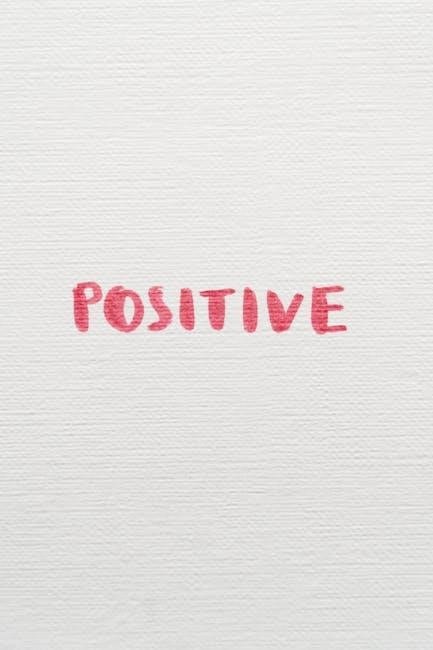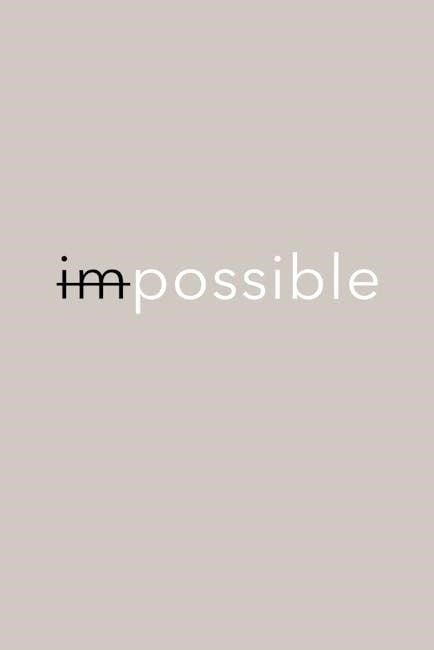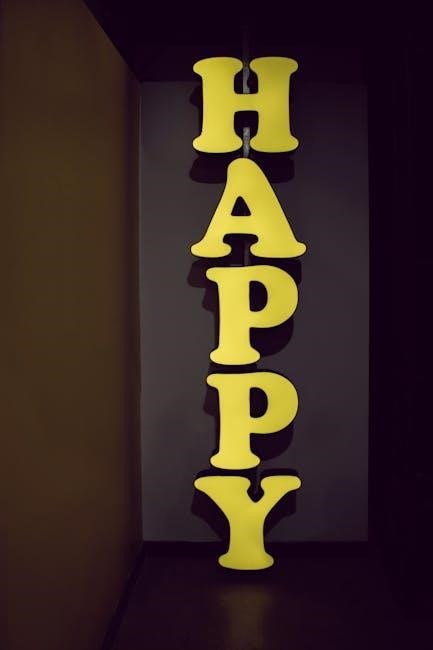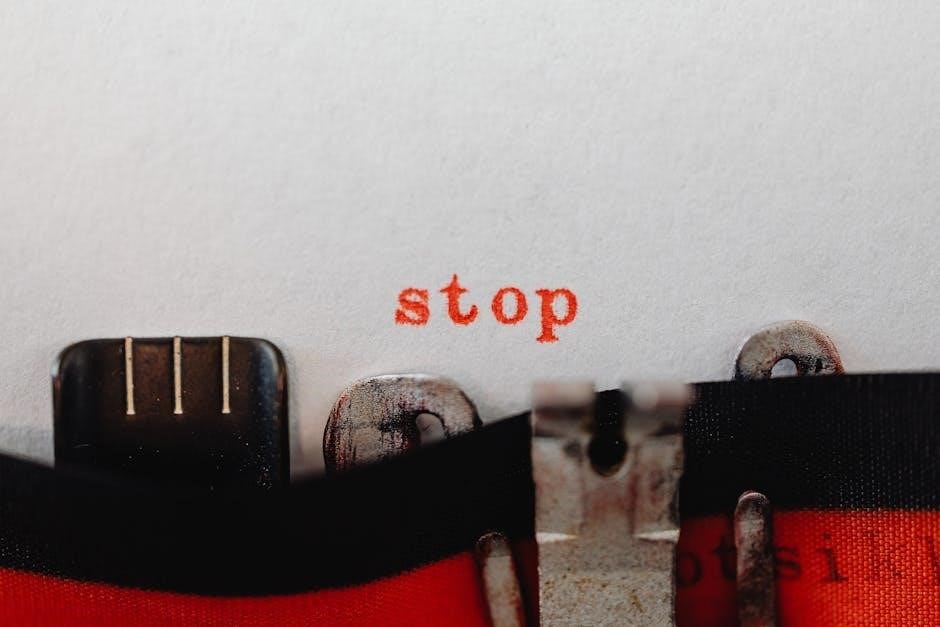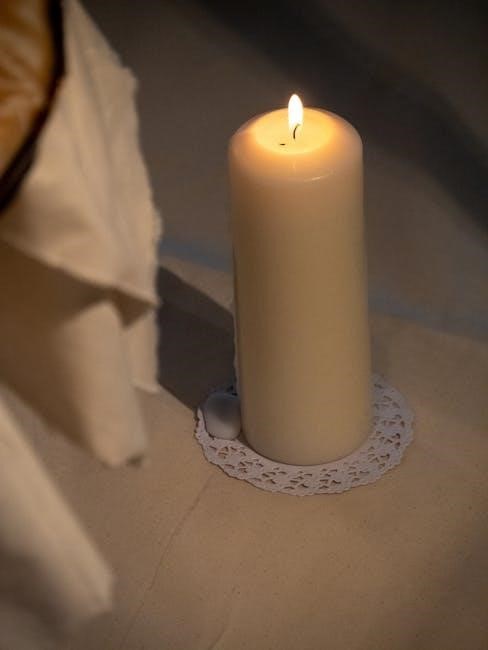A comprehensive guide to understanding tarot, offering insights into card meanings, sample spreads, and techniques. Perfect for beginners, it provides a portable, accessible resource for learning tarot.
What is a Tarot Guide Book?
A tarot guide book is a comprehensive resource designed to help individuals understand and master tarot card readings. It typically includes detailed explanations of card meanings, both for the Major and Minor Arcana, as well as guidance on interpreting spreads and layouts. These books often serve as educational tools, catering to both beginners and advanced practitioners. Many tarot guide books are available in PDF format, offering portability and easy access. They may also include historical context, symbolism, and practical tips for enhancing intuition during readings. Whether you’re learning the basics or refining your skills, a tarot guide book is an essential companion for anyone exploring the world of tarot.
- Explains card meanings and symbolism.
- Provides sample spreads and layouts.
- Offers practical tips for readings.
- Suitable for all skill levels.
Importance of Using a Tarot Guide Book
A tarot guide book is an invaluable tool for anyone seeking to deepen their understanding of tarot. It provides structured learning, helping users interpret cards accurately and understand their symbolism. Whether you’re a beginner or an experienced reader, a guide book offers practical insights and techniques to enhance your readings. It serves as a reference for card meanings, spreads, and layouts, ensuring consistency and clarity. Additionally, a tarot guide book in PDF format allows for easy access and portability, making it a convenient resource for learning and practice. By using a guide book, you can refine your skills, explore advanced techniques, and gain confidence in your tarot practice.
- Enhances understanding of tarot symbolism.
- Provides practical tools for accurate readings.
- Supports both beginners and advanced practitioners.
- Offers portable learning with PDF convenience.
Benefits of a PDF Format for Tarot Guides
A tarot guide book in PDF format offers unparalleled convenience and accessibility. It allows users to access the content from any device, making it ideal for on-the-go learning. PDFs are easily searchable, enabling quick reference to specific card meanings or spreads. Additionally, the format preserves the layout and visuals, ensuring a seamless reading experience. Many PDF tarot guides are free or low-cost, making them affordable for beginners. They also often include interactive features like hyperlinks and bookmarks, enhancing navigation. Furthermore, PDFs are environmentally friendly, reducing the need for physical materials. Overall, the PDF format provides a flexible, user-friendly, and cost-effective way to explore tarot.
- Accessible on multiple devices.
- Searchable content for quick reference.
- Cost-effective and environmentally friendly.
- Interactive features for enhanced learning.
History of Tarot Cards
Tarot cards trace their origins to 15th-century Europe, evolving from a game to a tool for divination. Historical figures like Court de Gebelin and Éliphas Lévi influenced their symbolism, shaping their cultural significance globally.
Origins and Evolution of Tarot
Tarot cards originated in 15th-century Europe, initially used as a game before evolving into a tool for divination. The earliest decks emerged in Italy, with the Visconti-Sforza tarot being one of the oldest. Over time, tarot spread across Europe, adapting to cultural influences. In the late 18th century, French occultists like Court de Gebelin and Éliphas Lévi linked tarot to ancient Egyptian wisdom and Kabbalah, popularizing its mystical significance. The 20th century saw the rise of iconic decks such as the Rider-Waite-Smith, which remains widely used today. Tarot’s evolution reflects its adaptability, blending symbolism, psychology, and spirituality into a global practice.
Historical Figures in Tarot Development
Key figures have shaped tarot’s evolution, blending symbolism and mysticism. Court de Gebelin, an 18th-century French occultist, linked tarot to ancient Egyptian wisdom, popularizing its mystical significance. Éliphas Lévi further connected tarot to Kabbalah, enhancing its esoteric appeal. Arthur Edward Waite and Pamela Colman Smith created the iconic Rider-Waite-Smith deck, revolutionizing tarot imagery. Aleister Crowley and Frieda Harris developed the Thoth tarot, infusing it with Thelema and astrological influences. These figures transformed tarot into a global tool for self-discovery and divination, ensuring its enduring relevance across cultures and centuries.
Cultural Significance of Tarot Cards
Tarot cards hold profound cultural significance, serving as tools for self-discovery, divination, and artistic inspiration. Originating in Europe, tarot has evolved into a global phenomenon, blending symbolism from various traditions. Its imagery reflects universal themes of life, death, and transformation, resonating across cultures. Tarot has influenced art, literature, and psychology, with figures like Carl Jung exploring its archetypal significance. Today, tarot is used in spiritual practices, creative workshops, and personal growth, offering a bridge between the mystical and the mundane. Its adaptability and depth ensure its enduring relevance, making it a cherished part of human cultural heritage.

Structure of a Tarot Guide Book
A tarot guide book typically includes an introduction, card meanings, sample spreads, and advanced techniques. It offers a comprehensive approach to understanding tarot, perfect for all levels.

Welcome to the world of tarot! This guide is designed to help you embark on your tarot journey with confidence. Whether you’re curious about tarot or eager to deepen your understanding, this book provides a clear and accessible path. Discover the basics of tarot, including how to choose the right deck, understand card meanings, and perform simple readings. Learn about the Major and Minor Arcana, and explore sample spreads to get started. This introduction sets the foundation for your tarot practice, offering practical tips and insights to enhance your skills. With this guide, you’ll gain the tools to unlock the symbolism and intuition behind tarot, making it a valuable companion for beginners and beyond.
Understanding Tarot Card Meanings
Mastering tarot card meanings is essential for meaningful readings. This guidebook breaks down the symbolism of both the Major and Minor Arcana, offering insights into their interpretations. Learn how the Major Arcana cards, like The Chariot or The Moon, represent life’s major themes and transitions. The Minor Arcana, divided into suits, reflects everyday situations and emotions. Discover how to interpret card meanings in context, considering their position in a spread and relationship with other cards. Practical examples and tips help you deepen your understanding, allowing you to connect with the cards on a personal level. This section is your key to unlocking the tarot’s hidden language, making readings more intuitive and impactful.
Sample Spreads and Layouts
Sample spreads and layouts are crucial for structuring tarot readings effectively. This guidebook offers a variety of spreads, from simple three-card layouts to complex Celtic Cross arrangements. Each spread is designed to address specific questions or themes, helping you focus your readings. Learn how to interpret card positions and relationships within a spread. For example, the Three-Card Spread explores past, present, and future, while the Celtic Cross delves into deeper, complex situations. The guidebook also includes mini-layouts for each Major Arcana card, providing insights into their symbolism. With clear instructions and visual examples, you’ll master how to lay out cards for meaningful and accurate readings, enhancing your tarot practice and connection to the cards.
Advanced Techniques for Tarot Readings
Advanced techniques elevate your tarot practice, helping you delve deeper into readings. Explore methods like card reversals, intuitive jumps, and connecting cards through storytelling. Enhance your intuition by journaling insights and reflecting on recurring themes. Learn to synthesize multiple cards, uncovering subtle patterns and relationships. Discover how to use timing and astrological influences to add depth. Practice advanced spreads, such as the Tree of Life or Relationship Spread, for complex inquiries. These techniques empower you to move beyond basics, offering richer, more nuanced interpretations. Whether refining your skills or expanding your practice, these advanced strategies will enhance your connection to the tarot and improve your ability to guide others effectively.

Popular Tarot Guide Books
Discover top-rated tarot guide books like The Pictorial Key to the Tarot, Guide to Tarot Cards, and The Complete Guidebook for the Crow Tarot, offering deep insights and practical tips.

The Pictorial Key to the Tarot
The Pictorial Key to the Tarot by Arthur Edward Waite is a foundational guide for tarot enthusiasts. It explores the symbolism and meanings of both Major and Minor Arcana cards, offering detailed interpretations. This classic text is essential for understanding tarot history and symbolism. Available in PDF, it remains a timeless resource for learners. Its comprehensive approach makes it suitable for both beginners and advanced readers, providing a deeper connection to tarot practices.
Guide to Tarot Cards
Guide to Tarot Cards is a valuable resource for understanding tarot symbolism and interpretations. It focuses on explaining the meanings of both Major and Minor Arcana cards, providing insights into their roles in readings. The guide includes sample spreads and layouts, helping learners practice and refine their skills. Available in PDF format, it is easily accessible and portable, making it ideal for both beginners and experienced readers. This guide emphasizes practical applications, offering tips for intuitive readings and connecting with the cards on a deeper level. Its clear and concise approach ensures that users can confidently navigate tarot practices, whether for personal growth or professional development.
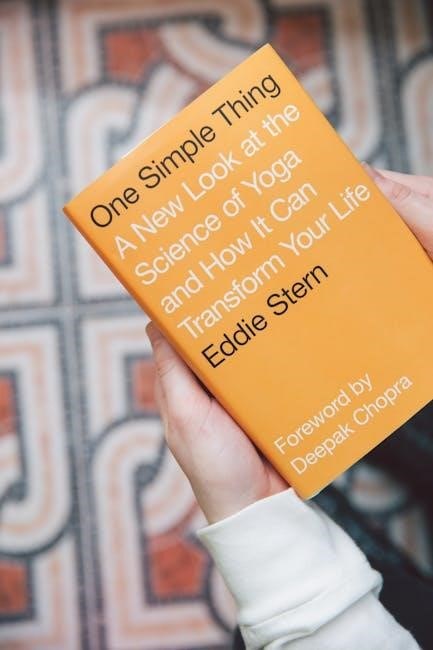
Easy Guide for Rider-Waite Based Tarot Reading
Easy Guide for Rider-Waite Based Tarot Reading is a straightforward resource designed to simplify tarot learning. Focused on the iconic Rider-Waite deck, it provides detailed explanations of card meanings, symbols, and interpretations. The guide includes practical tips for conducting intuitive readings and offers sample spreads tailored for beginners. Its clear, step-by-step approach ensures that users can quickly grasp the fundamentals of tarot. Available in PDF format, it is easily accessible and perfect for on-the-go learning. This guide is ideal for those seeking a user-friendly introduction to tarot, helping readers connect with the cards and deepen their understanding of the Rider-Waite tradition.
The Complete Guidebook for the Crow Tarot

The Complete Guidebook for the Crow Tarot is an essential resource for mastering the Crow Tarot deck. This detailed guidebook offers in-depth explanations of card meanings, symbols, and interpretations, making it perfect for both beginners and advanced readers. It includes sample spreads, layouts, and practical tips to enhance your tarot practice. The guidebook is available in a convenient PDF format, allowing easy access on various devices. With its comprehensive approach, it helps users connect with the unique energy of the Crow Tarot, ensuring a deeper understanding of its imagery and symbolism. This guidebook is a must-have for anyone looking to explore the Crow Tarot and refine their reading skills.
Ultimate Guide to Tarot by Liz Dean
Ultimate Guide to Tarot by Liz Dean is a highly regarded resource for tarot enthusiasts. This comprehensive guidebook offers detailed insights into tarot card meanings, spreads, and advanced reading techniques. Designed for both beginners and experienced readers, it provides practical advice to deepen your understanding of tarot symbolism. The guide is available in PDF format, making it easily accessible for study on various devices. Liz Dean’s expertise shines through, offering a fresh perspective on traditional tarot practices. With its clear and engaging style, this guide is a must-have for anyone seeking to enhance their tarot skills and connect with the cards on a deeper level. It’s a valuable tool for refining your intuition and improving your readings.

How to Use a Tarot Guide Book
Learn to interpret tarot cards using sample spreads, understand meanings, and enhance intuition. A guidebook offers practical steps to master tarot readings with confidence and clarity.
Choosing the Right Tarot Deck
Selecting the right tarot deck is a personal journey, as it depends on your connection to the artwork and symbolism. Consider decks that align with your intuition and style, whether traditional, modern, or themed. The Rider-Waite deck is a popular choice for beginners, while others prefer unique designs like The Crow Tarot. Review the card meanings and imagery to ensure they resonate with you. Many decks come with guidebooks, offering interpretations and spreads. Choose a deck that feels comfortable and inspiring, as this will enhance your reading experience and deepen your understanding of tarot symbolism and intuition.

Learning Tarot Card Meanings

Mastering tarot card meanings is essential for effective readings. Begin by studying the Major Arcana, which represents life’s major themes, and the Minor Arcana, reflecting everyday situations. Use a tarot guidebook to explore detailed interpretations, symbolism, and keywords for each card. Focus on understanding the differences between upright and reversed meanings, as well as how cards interact in spreads. Practice by referencing sample spreads and reflecting on personal experiences. Over time, intuition will deepen your understanding, allowing you to connect with the cards on a deeper level. Many guidebooks, such as The Pictorial Key to the Tarot and The Complete Guidebook for the Crow Tarot, offer comprehensive insights to aid your journey.
Practicing with Sample Spreads
Practicing with sample spreads is a cornerstone of mastering tarot. Tarot guidebooks often include predefined layouts, such as the Three-Card Spread or the Celtic Cross, to help beginners structure their readings. Start with simple spreads to understand how cards interact and tell a story. As you progress, experiment with more complex layouts to deepen your interpretation skills. Guidebooks like The Complete Guidebook for the Crow Tarot and The Pictorial Key to the Tarot provide detailed examples and interpretations. Regular practice with these spreads will enhance your ability to connect with the cards and trust your intuition, making you a confident and skilled tarot reader over time.
Enhancing Intuition in Readings
Enhancing intuition in tarot readings involves trusting your inner voice and connecting deeply with the cards. Tarot guidebooks often emphasize the importance of meditation and mindfulness to heighten sensitivity. Start by clearing your mind before a reading and focus on the present moment. Pay attention to subtle feelings or impressions when handling the cards; Journaling your interpretations can also help refine your intuition over time. Guidebooks like The Ultimate Guide to Tarot by Liz Dean offer tips on trusting your instincts and interpreting cards beyond their literal meanings. Regular practice and self-reflection will strengthen your intuitive abilities, allowing for more meaningful and accurate readings.
Resources for Further Learning
Explore online communities, recommended tarot courses, and free guidebooks for deeper learning. These resources enhance your tarot journey with expert insights and practical tools.
Online Communities and Forums
Online communities and forums are vibrant spaces for tarot enthusiasts to connect, share knowledge, and learn. Platforms like Biddy Tarot and Sacred Texts offer extensive resources, including discussions on favorite tarot books and interpretations. These communities provide support for beginners, with members often recommending guidebooks and sharing tips for mastering tarot. Additionally, forums host debates on historical figures like Court de Gebelin and their influence on tarot symbolism. Many users also discuss their experiences with popular guidebooks, such as The Pictorial Key to the Tarot and Ultimate Guide to Tarot by Liz Dean. Engaging with these communities can deepen your understanding and enhance your tarot practice.
Recommended Tarot Courses
Recommended tarot courses offer structured learning experiences, ideal for both beginners and advanced practitioners. Platforms like Udemy and Coursera feature courses that complement tarot guide books, providing interactive lessons and video tutorials. These courses often include hands-on exercises, such as practicing spreads and interpreting card meanings. Many focus on enhancing intuition and connecting with the symbolism of tarot. Some courses are designed to work alongside popular guidebooks, like The Pictorial Key to the Tarot or Ultimate Guide to Tarot by Liz Dean, offering a deeper understanding of the material. Whether you’re looking to master the basics or explore advanced techniques, these courses provide a comprehensive path to tarot mastery.
Free Tarot Guidebooks for Beginners
Free tarot guidebooks are an excellent starting point for newcomers to the world of tarot. These resources, often available in PDF format, provide foundational knowledge, including card meanings, sample spreads, and intuitive reading tips. Popular options like the Beginners Guide to Tarot and The Complete Guidebook for the Crow Tarot can be downloaded without cost, offering insights into major arcana and minor arcana interpretations. Websites like Biddy Tarot and Sacred Texts also offer free guidebooks, catering to those exploring traditional and modern tarot practices. These accessible materials are perfect for learning the basics and enhancing your understanding of tarot symbolism, making them invaluable for both beginners and experienced readers alike.































